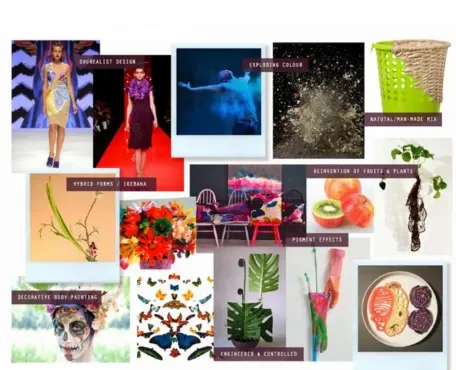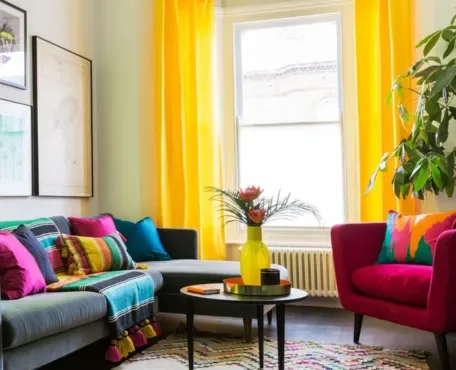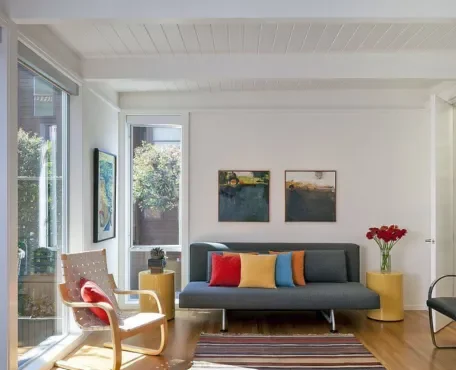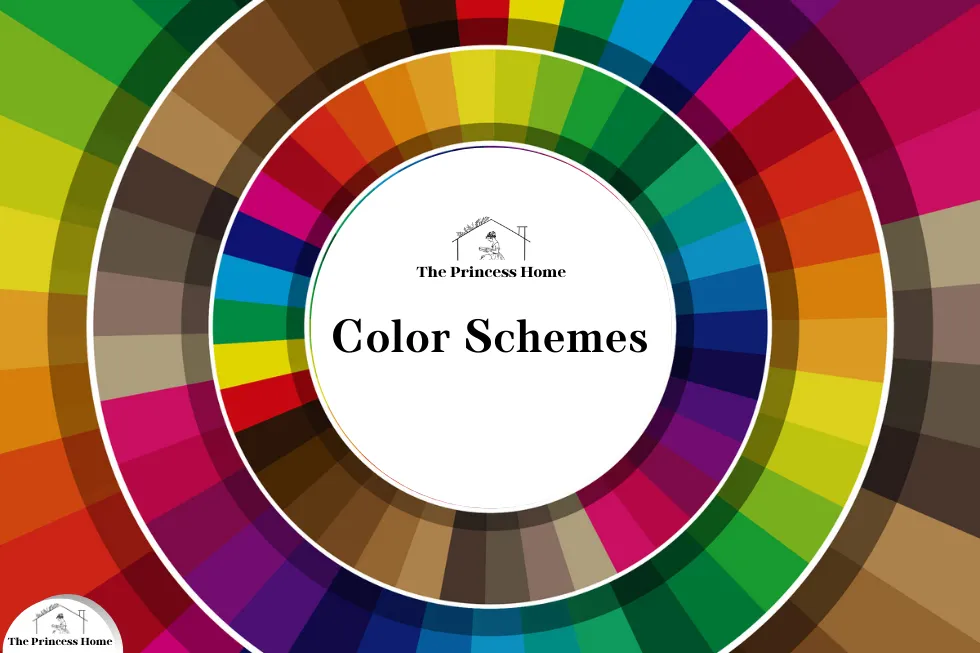
Color is one of the most powerful elements in design, capable of evoking emotions, setting moods, and conveying messages. Understanding how to effectively combine colors is crucial for designers across various fields, including graphic design, interior design, fashion design, and more. One of the fundamental aspects of color theory is creating color schemes, which involve selecting and combining colors in a harmonious and visually appealing way. In this article, we will delve into different types of color schemes, including monochromatic, analogous, complementary, and split-complementary, exploring their characteristics, applications, and techniques for creating them.
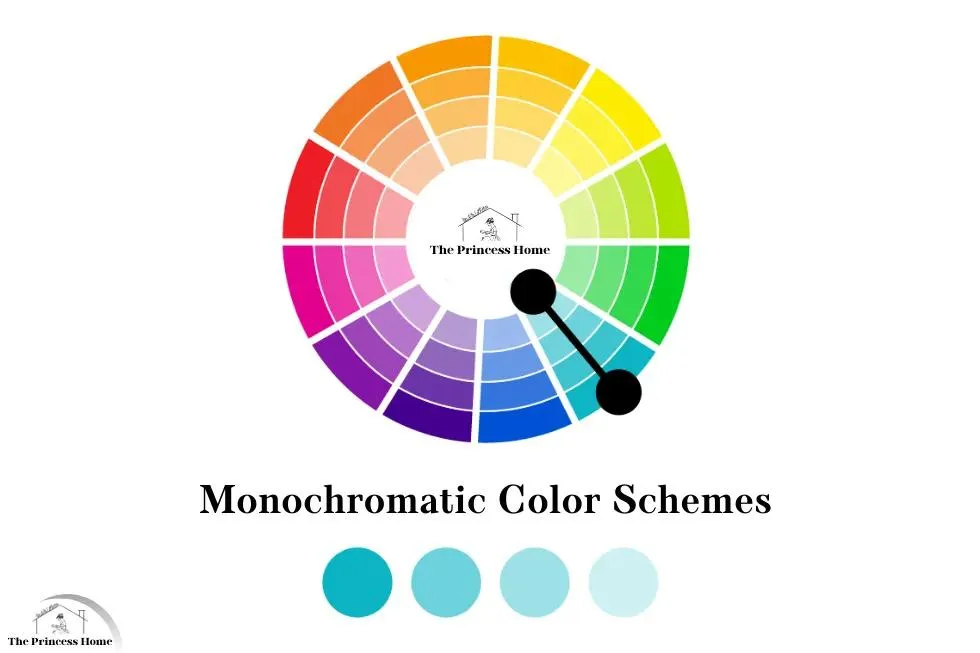
1.*Monochromatic Color :
Monochromatic color schemes are a foundational concept in the world of color theory and design. Stemming from a single base hue, monochromatic schemes offer a harmonious and elegant aesthetic by utilizing variations in saturation and brightness. This approach creates a palette that is cohesive and visually appealing, making it a popular choice for a wide range of design projects.
1.The Beauty of Monochromatic Color Schemes:
The beauty of monochromatic color schemes lies in their simplicity and versatility. By sticking to one hue and adjusting its shades, tints, and tones, designers can create a sense of unity and sophistication in their work. Monochromatic schemes are particularly effective when used in minimalist designs or when aiming for a subtle, understated look.
2.Creating Depth and Dimensionality:
One of the key benefits of monochromatic color schemes is their ability to create a sense of depth and dimensionality within a design. By playing with lightness and darkness, designers can add visual interest and complexity to their compositions without introducing additional colors. This can be achieved through the use of lighter tints to highlight certain elements or darker shades to create contrast and emphasis.
3.Ease of Use and Consistency:
Another advantage of monochromatic schemes is their ease of use and consistency. Since all colors in the palette are derived from the same base hue, there is a natural harmony between them, making it easy to create cohesive designs. This makes monochromatic schemes particularly well-suited for branding and identity projects, where consistency and cohesion are paramount.
4.Flexibility in Design:
When working with monochromatic color schemes, designers have the flexibility to experiment with different variations of the base hue to achieve the desired effect. For example, they can create a monochromatic scheme using varying shades of blue for a calming and serene aesthetic, or opt for shades of red to evoke warmth and energy.
5.Practical Benefits:
In addition to their aesthetic appeal, monochromatic color schemes also offer practical benefits. They can help simplify the design process by providing a clear framework for color selection, making it easier to make decisions about which colors to use and how to balance them within the composition. This can be especially helpful for designers who may feel overwhelmed by the vast array of color choices available.
Overall, monochromatic color schemes are a powerful tool in the designer’s arsenal, offering a balance of simplicity, sophistication, and versatility. Whether used in print, web, or environmental design, monochromatic schemes have the ability to elevate a design and create a lasting impression on viewers. By understanding how to effectively utilize monochromatic color schemes, designers can unlock a world of creative possibilities and take their work to new heights.
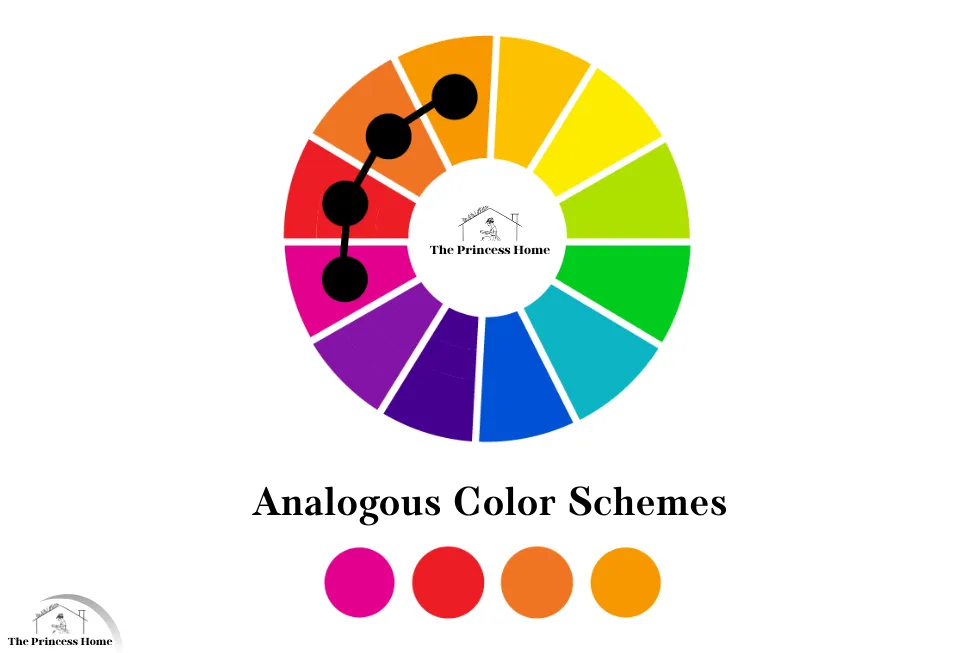
2.*Analogous Color :
Analogous color schemes are a fundamental aspect of color theory and design, offering a harmonious and visually pleasing approach to color combinations. These schemes are characterized by colors that are adjacent to each other on the color wheel, creating a seamless transition between hues. Analogous colors share similar undertones, resulting in a sense of unity and cohesion within the palette.
1.The Beauty of Analogous Color Schemes:
The beauty of analogous color schemes lies in their ability to evoke a feeling of harmony and balance. By selecting colors that are closely related on the color wheel, designers can create compositions that feel natural and cohesive. This makes analogous schemes particularly well-suited for projects where a sense of unity and coherence is desired, such as branding or interior design.
2.Versatility in Design:
One of the key benefits of analogous color schemes is their versatility. By choosing a dominant color as a starting point and then selecting neighboring hues to complement it, designers can create a wide range of looks and moods. For example, a palette of greens and blues might evoke a sense of tranquility and calmness, while a combination of oranges and yellows might feel warm and energetic.
3.Creating Visual Appeal Without High Contrast:
Analogous color schemes are also popular for their ability to create visually striking designs without relying on high levels of contrast. Since the colors in the palette are closely related, there is a natural sense of balance and unity, allowing designers to create compositions that are both visually appealing and harmonious. This makes analogous schemes a popular choice for projects where subtlety and sophistication are desired.
4.Inspiration from Nature:
Designers often draw inspiration from nature when creating analogous color schemes, as many natural phenomena, such as sunsets or foliage, exhibit this type of color harmony. By observing the colors present in the natural world, designers can create palettes that feel organic and timeless, connecting with viewers on a visceral level.
In summary, analogous color schemes offer a versatile and visually appealing approach to color combinations. By selecting colors that are adjacent to each other on the color wheel, designers can create compositions that feel harmonious and balanced, making them ideal for a wide range of design projects. Whether used in branding, illustration, or interior design, analogous color schemes have the ability to captivate viewers and create lasting impressions.

3.*Complementary Color :
Complementary color schemes are a dynamic and impactful approach to color combinations, based on colors that are opposite each other on the color wheel. This type of scheme creates a high level of contrast and visual interest, making it a popular choice for designs that aim to grab attention and make a bold statement.
1.The Defining Characteristic of Complementary Color Schemes:
The defining characteristic of complementary color schemes is the contrast between the selected hues. When placed next to each other, complementary colors intensify each other, creating a vibrant and energetic effect. This contrast is particularly striking because complementary colors are at opposite ends of the color spectrum, such as red and green, blue and orange, or yellow and purple.
2.Creating Visually Striking Compositions:
Designers often use complementary color schemes to create visually striking compositions that demand attention. By pairing complementary colors in equal proportions, designers can create designs that are balanced and harmonious, despite the high level of contrast. This balance is achieved through careful consideration of factors such as color intensity, saturation, and placement within the composition.
3.Generating Visual Excitement and Drama:
One of the key benefits of complementary color schemes is their ability to create a sense of visual excitement and drama. The contrast between the selected hues draws the viewer’s eye and creates a focal point within the design. This makes complementary schemes particularly effective for projects where the goal is to create impact and convey a strong message, such as advertising or branding.
4.Exploring Creative Possibilities:
Complementary color schemes also offer a wide range of creative possibilities. Designers can experiment with different combinations of complementary colors to achieve different effects and moods. For example, pairing warm complementary colors like red and orange can create a sense of warmth and energy, while pairing cool complementary colors like blue and green can evoke a feeling of calmness and tranquility.
5.Balancing Boldness with Careful Consideration:
Despite their boldness, complementary color schemes require careful consideration and balance to avoid overwhelming the viewer. Designers must ensure that the selected hues work well together and that the contrast is balanced throughout the composition. This may involve adjusting the saturation or brightness of the colors, or incorporating neutral elements to provide relief from the intensity of the complementary hues.
In summary, complementary color schemes offer a powerful and impactful approach to color combinations. By leveraging the contrast between opposite hues on the color wheel, designers can create compositions that demand attention and make a bold statement. Whether used in graphic design, illustration, or interior design, complementary color schemes have the ability to captivate viewers and leave a lasting impression.
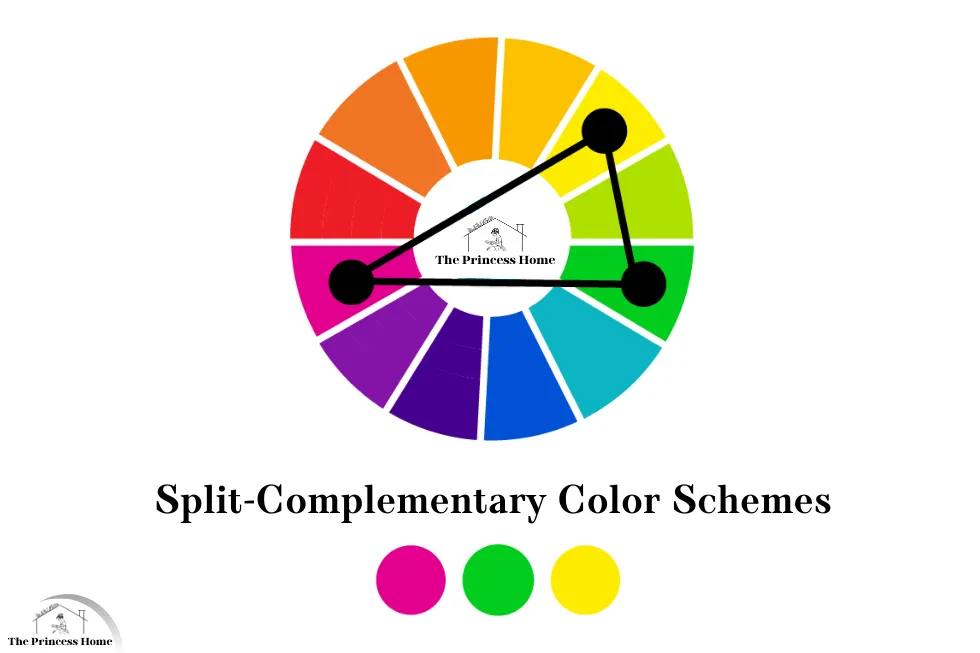
4.*Split-Complementary Color :
Split-complementary color schemes offer a balanced and harmonious approach to color combinations, providing an alternative to the stark contrast of complementary schemes. In this type of scheme, instead of pairing a color with its direct opposite on the color wheel, designers select a base color and then pair it with two colors adjacent to its complement. This creates a palette that maintains the vibrancy and contrast of complementary colors while offering a softer and more nuanced aesthetic.
1.The Beauty of Split-Complementary Color Schemes:
The beauty of split-complementary color schemes lies in their ability to strike a balance between contrast and harmony. By selecting colors that are adjacent to the complement of the base color, designers can create compositions that feel cohesive and visually appealing. This approach allows for a wider range of color combinations compared to traditional complementary schemes, offering greater flexibility and creative freedom.
2.Versatility in Design:
One of the key benefits of split-complementary color schemes is their versatility. Designers can experiment with different combinations of base colors and their split complements to achieve a variety of effects and moods. For example, pairing a warm base color like red with cool split complements like blue-green and blue-violet can create a balanced and dynamic composition that feels vibrant and energetic.
3.Harmony and Unity:
Split-complementary color schemes are also well-suited for projects where a sense of harmony and unity is desired, such as branding or interior design. By selecting colors that are closely related to the base hue, designers can create compositions that feel cohesive and balanced, without sacrificing the impact of contrast.
4.Creating Visual Interest and Depth:
Another advantage of split-complementary color schemes is their ability to create visual interest and depth within a composition. By incorporating colors that are adjacent to the complement of the base color, designers can add complexity and dimensionality to their designs, making them more engaging and dynamic.
5.Balance and Consideration:
Despite their versatility and flexibility, split-complementary color schemes require careful consideration and balance to ensure a successful outcome. Designers must pay attention to factors such as color intensity, saturation, and placement within the composition to achieve the desired effect. This may involve adjusting the proportions of the split complements or incorporating neutral elements to provide relief from the intensity of the colors.
In summary, split-complementary color schemes offer a balanced and harmonious approach to color combinations, providing an alternative to the stark contrast of complementary schemes. By selecting a base color and pairing it with two colors adjacent to its complement, designers can create compositions that feel cohesive, dynamic, and visually appealing. Whether used in graphic design, illustration, or interior design, split-complementary color schemes have the ability to captivate viewers and create lasting impressions.
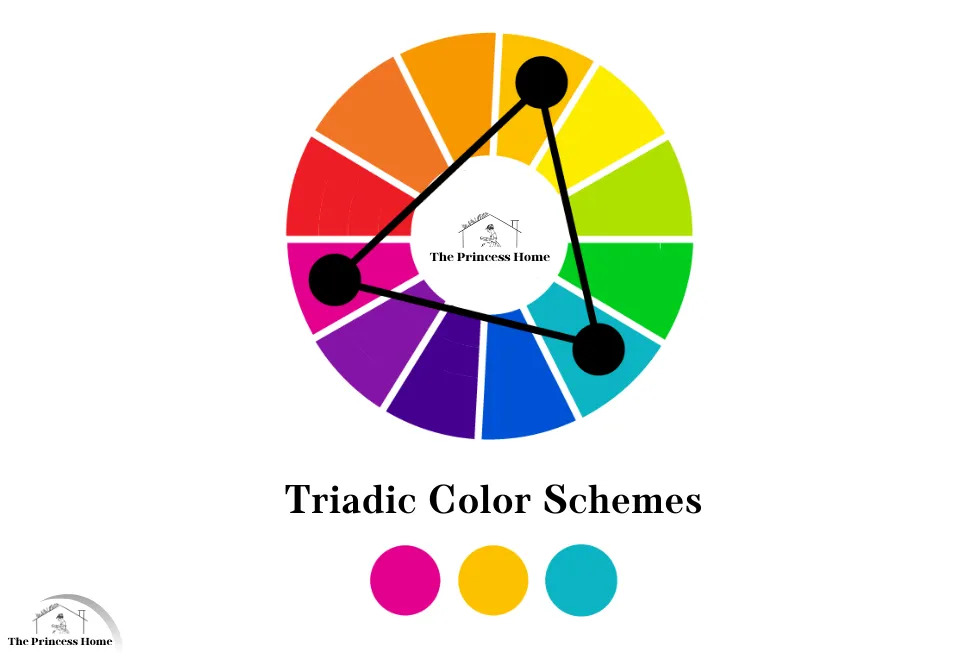
5.*Triadic Color :
Triadic color schemes are a dynamic and vibrant approach to color combinations, involving the selection of three colors that are evenly spaced around the color wheel. This type of scheme creates a balanced and visually appealing palette that offers a high level of contrast and interest.
1.The Defining Characteristic of Triadic Color Schemes:
The defining characteristic of triadic color schemes is the equal distance between the selected hues on the color wheel. This creates a sense of balance and harmony within the palette, as each color complements the others without overpowering them. Triadic schemes offer a wide range of creative possibilities, allowing designers to experiment with different combinations of primary, secondary, and tertiary colors.
2.Creating Visually Striking Compositions:
One of the key benefits of triadic color schemes is their ability to create visually striking compositions without relying on high levels of contrast. Since the selected hues are evenly spaced around the color wheel, there is a natural sense of balance and harmony within the palette. This makes triadic schemes particularly well-suited for projects where a sense of unity and coherence is desired, such as branding or interior design.
3.Versatility and Flexibility:
Triadic color schemes also offer a high level of versatility and flexibility. Designers can experiment with different combinations of hues to achieve different effects and moods. For example, pairing warm hues like red, yellow, and orange can create a sense of warmth and energy, while pairing cool hues like blue, green, and purple can evoke a feeling of calmness and tranquility.
4.Balance and Consideration:
Despite their versatility, triadic color schemes require careful consideration and balance to ensure a successful outcome. Designers must pay attention to factors such as color intensity, saturation, and placement within the composition to achieve the desired effect. This may involve adjusting the proportions of the selected hues or incorporating neutral elements to provide relief from the intensity of the colors.
In summary, triadic color schemes offer a balanced and vibrant approach to color combinations, providing a wide range of creative possibilities for designers. By selecting three colors that are evenly spaced around the color wheel, designers can create compositions that feel harmonious, dynamic, and visually appealing. Whether used in graphic design, illustration, or interior design, triadic color schemes have the ability to captivate viewers and create lasting impressions.
Conclusion:
Creating color schemes is an essential skill for designers, allowing them to effectively communicate ideas, evoke emotions, and engage viewers. By understanding different types of color schemes, including monochromatic, analogous, complementary, and split-complementary palettes, designers can create harmonious and visually appealing designs across various mediums.
Frequently Asked Questions about Color Schemes
1. What are color schemes, and why are they important in design?
Color schemes are combinations of colors chosen to create a specific visual effect or mood in design. They are important because they help establish the overall aesthetic, mood, and impact of a design, whether it’s in graphic design, interior design, fashion, or any other creative field.
2. How do I choose the right color scheme for my project?
Choosing the right color scheme depends on factors such as the message you want to convey, the emotions you want to evoke, and the overall aesthetic you’re aiming for. Consider the purpose of your project, your target audience, and any existing branding guidelines if applicable.
3. What is the difference between monochromatic and analogous color schemes?
Monochromatic color schemes involve variations of a single hue, while analogous color schemes consist of colors that are adjacent to each other on the color wheel. Monochromatic schemes offer a more subtle and harmonious look, while analogous schemes provide a bit more variety and contrast.
4. Can I use complementary colors in equal proportions in my design?
Yes, you can use complementary colors in equal proportions, but it’s important to balance them appropriately to avoid overwhelming the viewer. Consider factors such as color intensity, saturation, and placement within the composition to achieve a visually pleasing result.
5. How do I create a split-complementary color scheme?
To create a split-complementary color scheme, start with a base color and then select the two colors adjacent to its complement on the color wheel. This creates a palette that maintains the vibrancy and contrast of complementary colors while offering a softer and more nuanced aesthetic.
6. Are triadic color schemes suitable for all types of designs?
Triadic color schemes offer versatility and can be used in a wide range of designs, but they may not be suitable for every project. Consider the message, mood, and audience of your design to determine whether a triadic scheme is appropriate.
7. How do I ensure that my chosen color scheme works well together?
To ensure that your chosen color scheme works well together, consider factors such as color harmony, contrast, and balance. Experiment with different combinations, and consider using tools like color wheels or color theory principles to guide your decisions. Additionally, test your color scheme in different contexts and lighting conditions to see how it performs in real-world settings.


